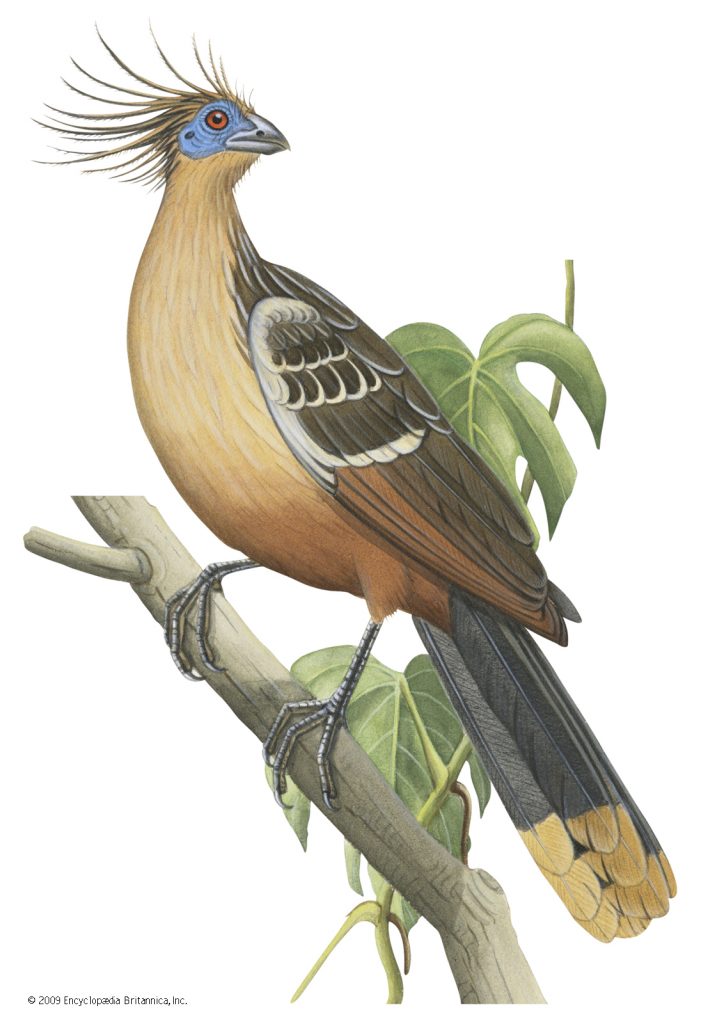
YAHWEH’S CREATION OR RANDOM EVOLUTION
The Hoatzin (Opisthocomos hoazin) is pheasant sized with a scruffy crest, a bright blue face, red eyes, brown plumage and a bronze-green stiff long tail. Found throughout the Amazon in northern and central South America (Stotz et. al., 1996). Also called the Reptile Bird, Skunk Bird, Stink Bird, or Canje Pheasant.
A distinguishing feature of young Hoatzins is the pair of functional wing claws which are found on the ends of their wings on the first and second fingers. This feature is lost when the bird matures into an adult (De Schauensee, 1964, Grahm, 1990, Strahl and Grajal, 1991, Zahler, 1997).
These wing claws are used so that the young birds can climb up trees in order to launch themselves on short flights. Fossil evidence shows that archaeopteryx – which evolutionists now insist must be a feathered dinosaur and not a bird – had the same type of claws on its wings.
Another fascinating difference between the Hoatzin and other birds is that it is nearly completely vegetarian. Its diet consists mostly of leaves, but these could not be digested in large quantities by other birds because of their high cellulose content. The fermentation produces chemicals that can smell unpleasantly like dung to humans. They are released from the bird’s gut, giving the animal the name of Skunk Bird or Stink Bird. However, the digestive system of the Hoatzin seems to work in a manner very similar to that of a cow. The larger-than-normal crop contains digestive bacteria which begin the process of fermentation before the leaves reach the bird’s stomach.
The Hoatzin is a unique and unusual species of a tropical bird. It is classified by science in its own family and suborder; it is the only species in its group as of today, in other words, it is in a class of its own.
There is no clear picture of the evolutionary path of this animal up to the present.
Merriam-Webster; www.audubon.org; animaldiversity.org; Wikipedia.